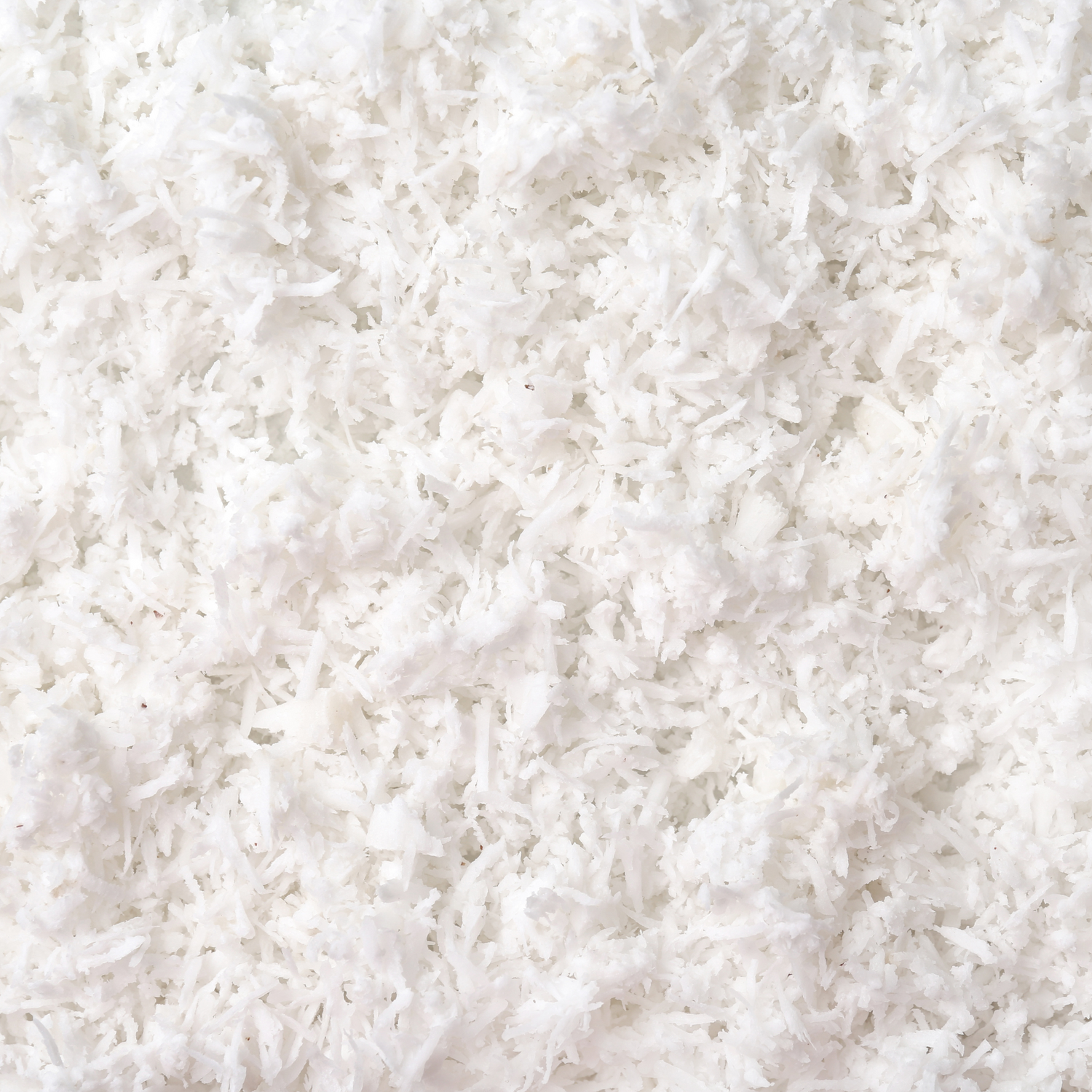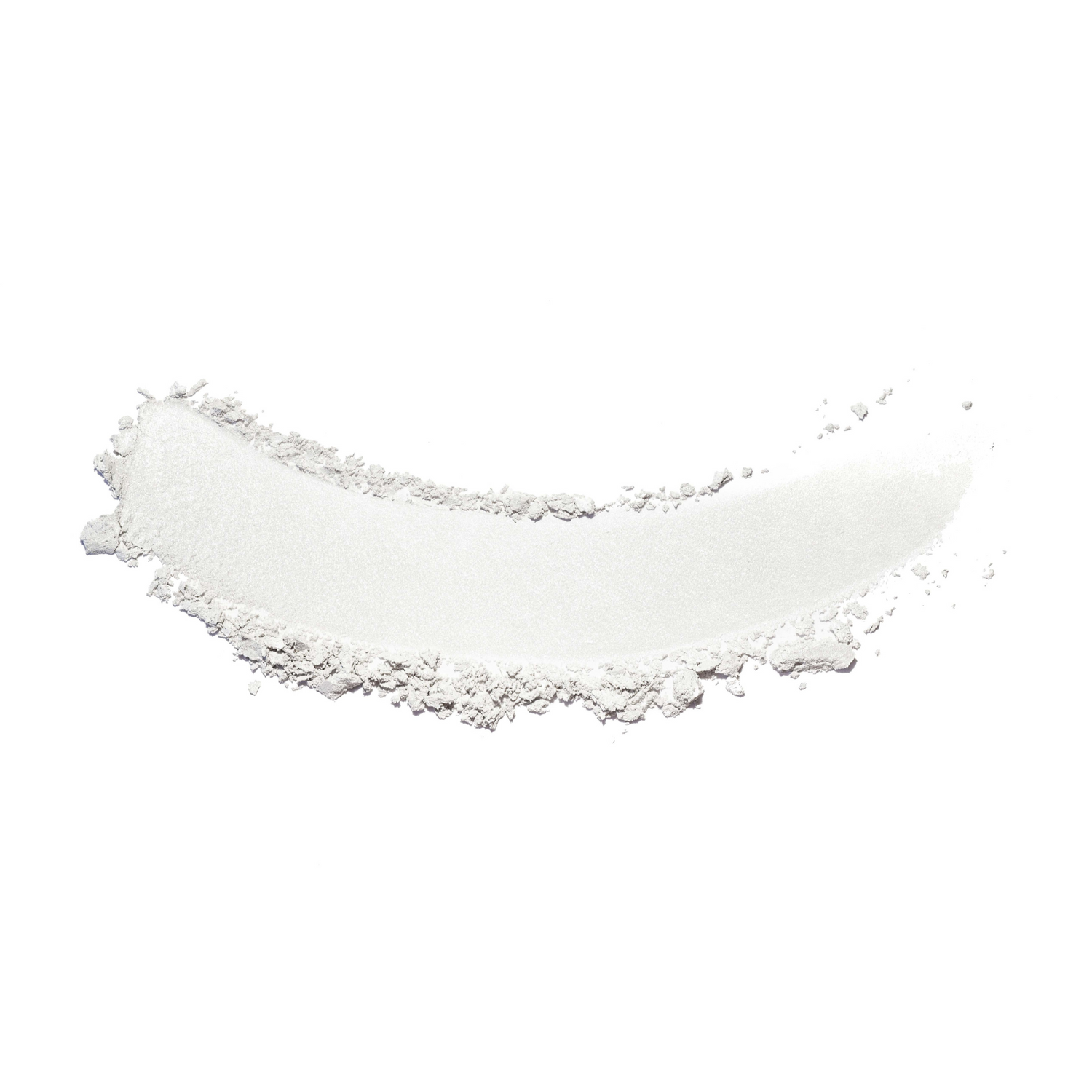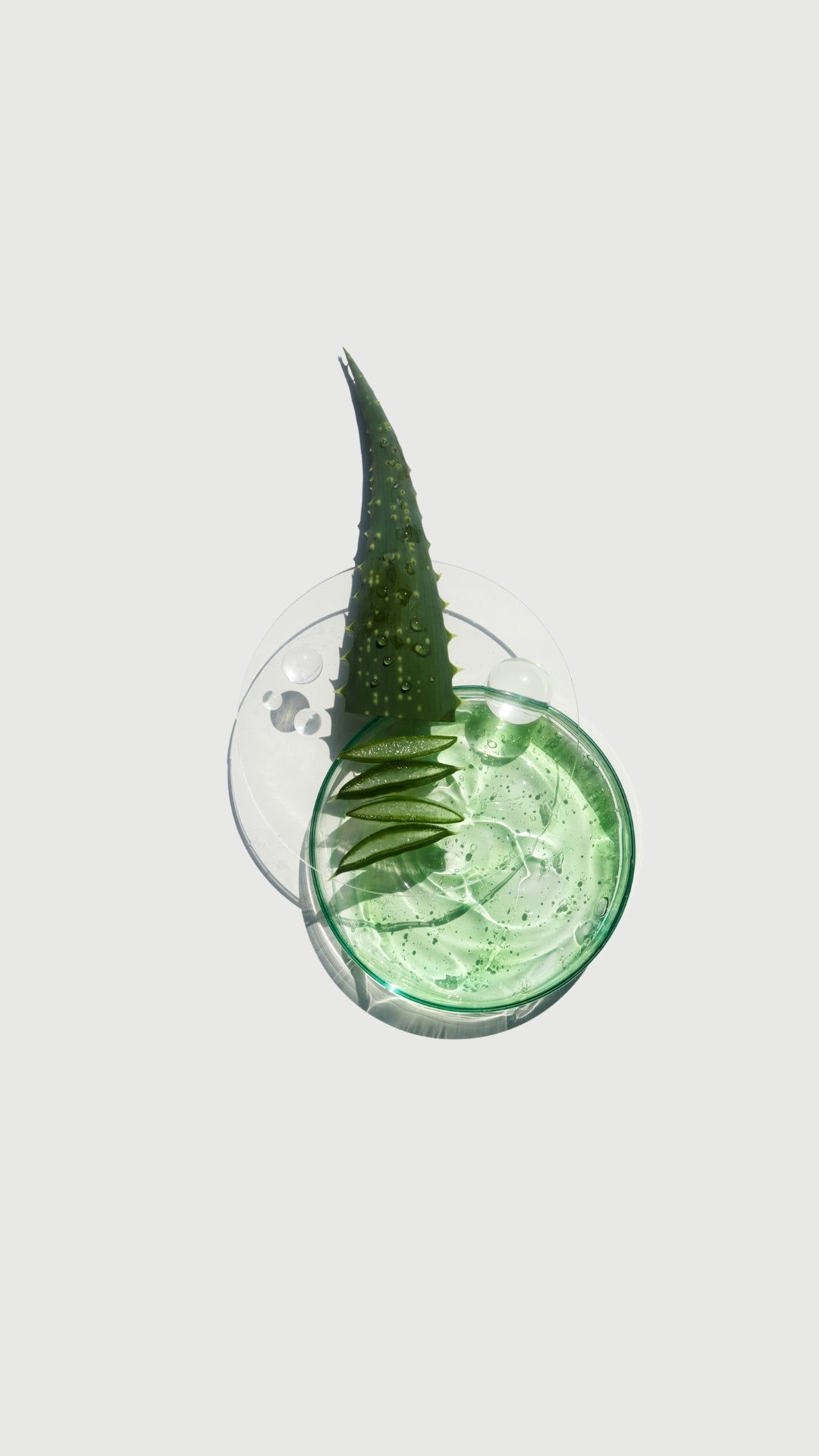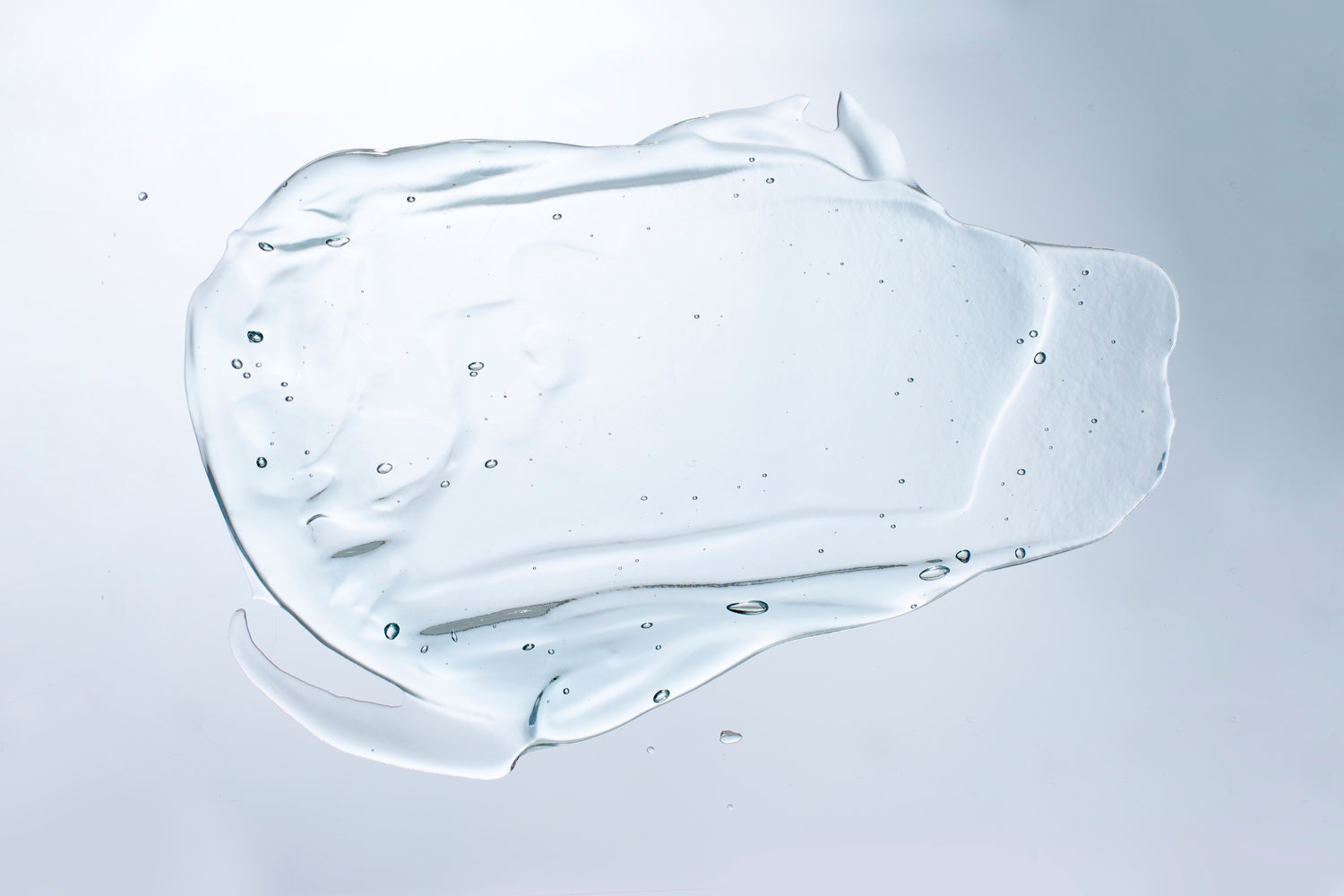We use science-backed, hypoallergenic ingredients carefully selected for sensitive skin. All our ingredients are gentle, non-irritating, and proven to clean your hair without disturbing your scalp.

Sodium Lauroyl Methyl Isethionate
A naturally-sourced cleansing agent recognized in many studies for its gentleness on the skin.

Cocamidopropyl Betaine
A mild co-surfactant derived from coconut oil that is deemed very low-risk for skin sensitization.
Fragrance-free, always
1 in 20 people are estimated to have a sensitivity to fragrance.
Our products will always be fragrance-free.
Panthenol
Aloe Barbadensis Leaf Juice
Sodium Methyl Cocoyl Taurate
Glycerin
Sodium Cocoyl Isethionate
A humectant that significantly enhances hydration by attracting and preserving moisture. It also contributes to visibly alleviating redness associated with skin sensitivity. Also called pro-vitamin B5.
Derived from the aloe vera plant, this extract provides benefits such as hydration and antioxidant properties.
Gentle coconut-derived surfactant frequently employed in cleansers to achieve a creamy foam.
Used for moisture retention, glycerin is a naturally occurring substance in our skin. It is utilized in skincare formulations to prevent dryness.
Gentle soap-free cleanser recognized for its ability to prevent skin barrier disruption. Derived from coconut, it is very compatible with sensitive skin.





All Ingredients
Aloe Barbadensis Leaf Juice
Derived from the aloe vera plant, this ingredient provides skin-soothing and hydrating benefits along with antioxidant properties. Originating from the leaves of the aloe vera plant, this ingredient contains vitamins, minerals, and polyphenols. Acts as a humectant.
Caprylyl Glycol
A humectant used to condition hair while serving as a moisturizing component. Its potent antibacterial properties also make it an effective preservative in cosmetics.
Cetyl Alcohol
Cetyl alcohol is a fatty alcohol that acts as an emollient, helping to soften and smooth the skin, while also working as a thickener and stabilizer in formulations. Unlike drying alcohols, this ingredient is non-irritating and actually helps maintain moisture in the skin. It can be derived from plant sources like coconut oil or created synthetically, with both forms being equally effective.
Although very rare, any potential irritation is usually linked to impurities rather than the ingredient itself. Cetyl alcohol is considered safe for use in cosmetics in concentrations up to 50%, although it is typically used in concentrations between 5–10%.
Citric Acid
Derived from citrus fruits, this ingredient is incorporated into hair care products to regulate the formula's pH. It is typically used in minimal quantities to adjust the pH and prevent products from becoming excessively alkaline or basic.
Cocamidopropyl Betaine
A mild cleansing component known for enhancing lather, cocamidopropyl betaine can be derived naturally from coconut oil or synthetically produced. While considered low risk for skin sensitization, poor manufacturing practices (and not cocamidopropyl betaine itself) can result in potential impurities and sensitization, highlighting the importance of selecting well-formulated hair care products.
Dimethicone
Dimethicone is a silicone-based compound frequently used in skin and hair care products for its smoothing and protective qualities. It forms a breathable barrier on the skin, which helps lock in moisture while allowing perspiration to escape naturally. Recognized by the FDA as a skin protectant, dimethicone is prized for its lightweight, silky texture that doesn’t leave a greasy finish. It is considered safe and effective in a wide range of product types, including hair conditioners, moisturizers and sunscreens.
Disodium EDTA
Disodium EDTA is a chelating agent that stabilizes cosmetic formulations by binding with metal ions that could otherwise affect product performance. It helps preservatives function more effectively and prevents unwanted chemical reactions that might shorten a product’s shelf life. In addition to skincare, it’s also used in foods and pharmaceuticals. At the concentrations used in personal care products, it is considered safe and non-irritating, and does not absorb into skin.
Ethylhexylglycerin
Ethylhexylglycerin is a synthetic compound used to soften the skin and improve the performance of other preservatives in cosmetic formulations. It has mild moisturizing properties, helping to keep skin hydrated without leaving a tacky residue. Often paired with ingredients like phenoxyethanol, it enhances preservative effectiveness while maintaining a low risk of irritation. Sensitivity to this ingredient is considered rare, making it a well-tolerated option in personal care products.
Glutamic Acid
Glutamic acid is a naturally occurring amino acid that supports skin hydration and conditioning. In cosmetics, it is usually made synthetically and functions as a skin-replenishing agent that helps maintain moisture balance. Since it is a non-essential amino acid already present in the body, it tends to be well tolerated. It has been deemed safe for use in personal care formulations by the Cosmetic Ingredient Review.
Glycerin
Used for moisture retention, glycerin is a naturally occurring substance in our skin. It is utilized in skincare formulations to prevent dryness. It can be obtained from natural sources or produced synthetically. Functioning as a skin-replenishing and skin-restoring ingredient, it plays a crucial role in preserving the skin's moisture level.
Guar Hydroxypropyltrimonium Chloride
Among the most extensively employed synthetic cationic polymers in the cosmetics industry, it not only conditions the skin and hair but also facilitates the deposit of active ingredients on the skin and/or hair. It also contributes anti-static properties without causing hair to feel heavy.
Hydrolyzed Wheat Protein
Functioning as a hydrator, conditioning agent, and film-forming agent for hair, hydrolyzed wheat protein is derived from wheat that has undergone hydrolysis.
Hydrolyzed Wheat Starch
Used as a product thickener and hair moisturizer. It contains a mixture of amino acids and peptides of varying lengths that are derived from wheat sources.
Hydroxyacetophenone
Hydroxyacetophenone is a synthetic antioxidant that also functions as a skin-soothing agent and preservative booster. It helps neutralize free radicals and enhances the effectiveness of traditional preservatives, allowing for lower usage levels of harsher ingredients. This dual-action compound contributes to both skin comfort and formula stability. It is highly stable in a variety of pH levels and product types, and has shown minimal risk for irritation or allergic response in cosmetic concentrations.
Niacinamide
Niacinamide, or vitamin B3, is a well-researched skincare ingredient known for improving skin tone, minimizing the appearance of pores, and reinforcing the skin’s barrier. It also helps balance oil production and reduce inflammation, making it a favorite in products targeting acne and signs of aging. Its benefits are evident even in low concentrations, and it remains safe to use up to 20%, according to the Cosmetic Ingredient Review Expert Panel.
Panthenol
Also referred to as pro-vitamin B5, panthenol functions as a humectant, significantly boosting hydration by attracting and retaining moisture. Research indicates that a 1% concentration of panthenol rapidly enhances skin hydration while reducing transepidermal water loss, resulting in an overall improvement in the skin's texture and appearance. In concentrations ranging from 1-5%, panthenol has been reported to contribute to healing and repairing the skin barrier. Studies also suggest that panthenol visibly diminishes redness caused by sensitivity. Panthenol is an alcohol derivative, but it is a very gentle and non-drying form of alcohol suitable for sensitive skin.
Phenoxyethanol
A synthetic preservative providing protection against undesired microbes in cosmetics, phenoxyethanol is well-tolerated by sensitive skin. It holds global approval for use in concentrations up to 1% in rinse-off or leave-on cosmetic products. Despite its recent negative reputation, the controversial research does not pertain to cosmetic-grade phenoxyethanol (which undergoes purification before integration into formulations, ensuring its safety).
According to research, when compared to many other preservatives, the occurrence of sensitization or allergic reactions to phenoxyethanol from cosmetics is very rare. Preservatives are designed to kill mold, fungus, and other bacteria, therefore all preservatives (even natural ones) carry a small risk of skin sensitization. Natural preservatives are not considered a better option, since natural preservatives require higher amounts (up to 10% to be effective) potentially leading to skin irritation or sensitization, making them less ideal substitutes for synthetic preservatives.
Polyquaternium -7
A polymer that works as an antistatic agent, film former, and hair fixative across many cosmetics. Functioning as a conditioning agent, it creates a protective barrier around the hair.
Potassium Sorbate
Potassium sorbate is a widely used preservative in both food and cosmetic products, valued for its ability to inhibit the growth of mold and yeast. Though it can occur naturally, most potassium sorbate used in formulations is synthetically produced. In personal care products, it is typically combined with stronger preservatives due to its moderate effectiveness on its own. Studies have shown it to be safe in concentrations of up to 10%, although it is often used at a concentration below 1%.
Sodium Methyl Cocoyl Taurate
Gentle coconut-derived surfactant frequently employed in cleansers to achieve a creamy foam.
Sodium Chloride
Commonly recognized as salt, this ingredient is primarily employed to thicken hair care formulations and also serves as a binding agent. Despite the potential for salt to dehydrate the skin, the minimal amounts utilized in hair care formulations negates this issue. Therefore, sodium chloride is widely acknowledged as non-irritating and non-drying when incorporated into hair care products.
Sodium Cocoyl Isethionate
Gentle soap-free cleanser recognized for its ability to prevent skin barrier disruption. Derived from coconut, it is very compatible with sensitive skin.
Sodium Hyaluronate
Sodium hyaluronate is the salt form of hyaluronic acid, known for its ability to deeply hydrate the skin by binding to water molecules. It penetrates the skin easily due to its smaller molecular size and is often used to plump and smooth the skin's appearance. This ingredient also acts as a postbiotic, supporting a healthy skin microbiome. It is widely used in skincare for its non-irritating and effective moisturizing properties.
Sodium Hydroxide
Commonly referred to as lye, this ingredient possesses high alkalinity, positioning it on the basic side of the pH range with a natural pH of 13. It is incorporated in limited quantities in cosmetics to fine-tune their pH levels.
Sodium Lauroyl Methyl Isethionate
A naturally-sourced cleansing agent recognized in many studies for its gentleness on the skin.
Renowned for its exceptional ability to be compatible with other ingredients, Sodium Lauroyl Methyl Isethionate is a preferred choice in many body washes, facial cleansers, and shampoos.
Stearamidopropyl Dimethylamine
Stearamidopropyl dimethylamine is a synthetic ingredient commonly used in hair care products for its antistatic and conditioning benefits. It also serves as an emulsifier and viscosity enhancer in both hair and skin formulas. While generally safe when properly formulated, it may contain impurities that can cause skin sensitization if not carefully purified. Regulatory reviews have concluded that it is safe in cosmetic products as long as it’s used in concentrations that do not cause irritation, which is between 0.01-5%.
Stearyl Alcohol
Stearyl alcohol is a non-drying fatty alcohol that functions as an emollient and thickening agent in both skin and hair care formulations. It helps stabilize product texture by ensuring other ingredients remain evenly dispersed throughout the formula. Unlike harsher types of alcohol, stearyl alcohol supports moisture retention and contributes to a smooth, creamy consistency, making it ideal for gentle, hydrating products.
Trisodium Ethylenediamine Disuccinate
A chelating agent that holds a crucial role in ensuring the stability, appearance, and effectiveness of a formulation, this ingredient is widely utilized in body washes, cleansers, and shampoos. It is incorporated into cosmetic formulations to bind with metal ions or metallic compounds, preventing their adherence to surfaces such as skin or hair and averting contamination. It also contributes to fortifying a product's preservative system by preventing metal ions from destabilizing essential components in water-based formulas.
Water
The most commonly used ingredient in hair care, frequently occupying the first position in product ingredient lists. It serves as a solvent.
1,2-Hexanediol
1,2-Hexanediol is a multi-functional ingredient used as a humectant, solvent, and preservative enhancer in cosmetic formulations. It helps attract and retain moisture in the skin while improving the efficacy of other antimicrobial agents, particularly against bacteria. Because it does not combat mold or fungi (it combats bacteria), it’s often combined with other preservatives. Reviewed by the Expert Panel for Cosmetic Ingredient Safety, it is considered non-sensitizing and well-suited for skincare use.


